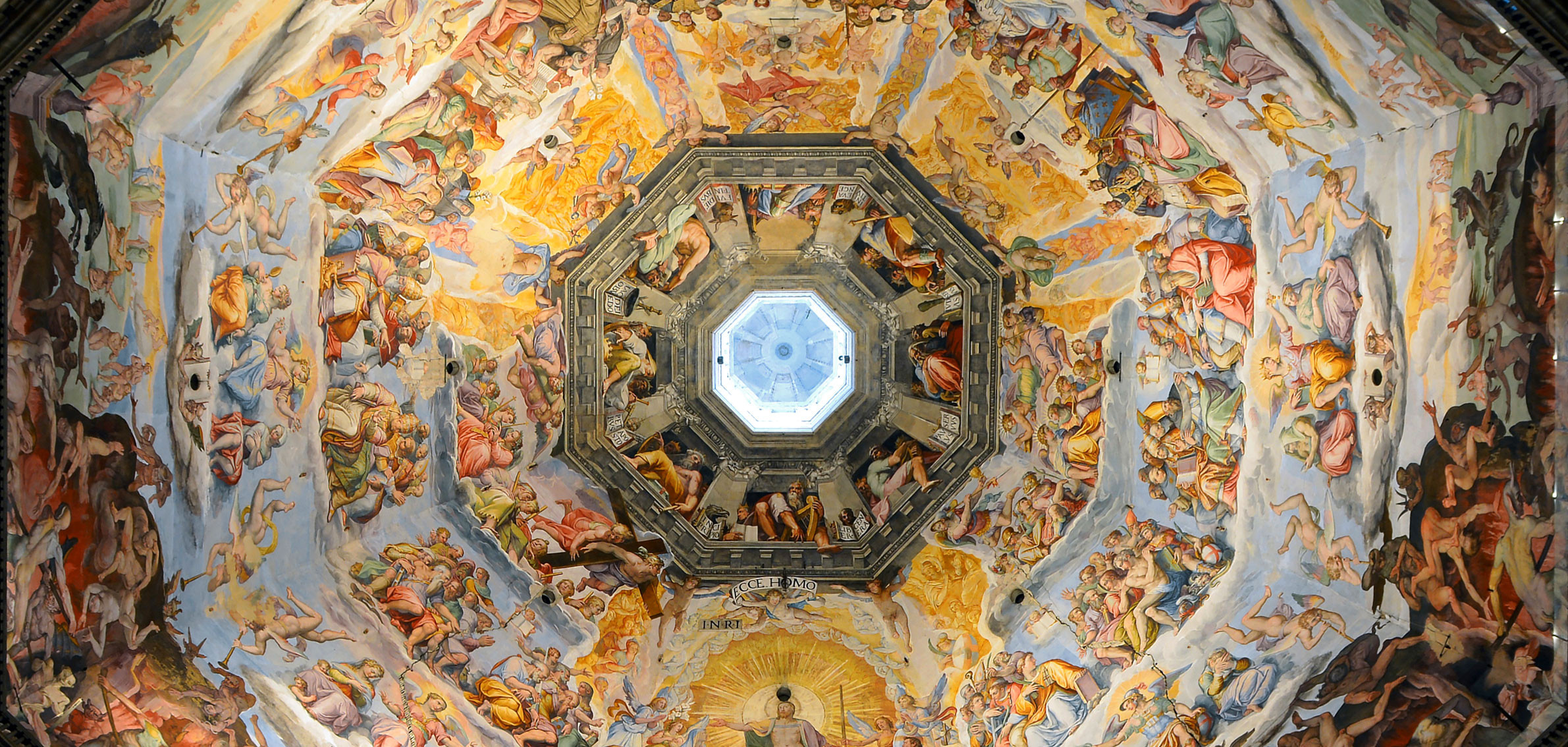
Inside Brunelleschi's Dome
Brunelleschi's dome, with its red tiled roof and white contrasting marble ribs, is one of the most distinctive architectures of Florence. Admired and known for its exterior appearance, it is actually an architectural masterpiece that is equally astonishing when viewed from the inside. Brunelleschi had left the interior of the dome white, ready to receive the decoration that would sooner or later be executed, in all likelihood, with mosaic like the one inside the Baptistery.
And yet the Florentines had to wait 1572, more than a century later, to see the starting of the works, perhaps because a mosaic decoration raised doubts about the ability of the structure to support the weight of the tesserae. So the idea of the mosaic was abandoned and it was decided to perform a pictorial decoration instead.
Grand Duke Cosimo I entrusted the work to his trusted court painter, the old Giorgio Vasari who, together with Vincenzo Borghini, designed an iconological program worthy of that titanic commission.
The central theme was to be the Last Judgment, echoing that of the Baptistery, but revisited following the dictates of the Council of Trent, where the figure of Christ the Judge is surrounded by a tribunal composed of numerous allegories, as well as an infinity of saints, blessed, damned, angels, demons and prophets, organized according to a sense of reading both vertical and horizontal.
It was not an easy task for the old master to climb up to 90 meters in height to paint the Elders of the Apocalypse, which are looking out a tribune at the base of the dome’s lantern. However, he succeeded in completing them before his death in 1574 which was soon followed by that of his client Cosimo I.
The ascent to the throne of Francesco I altered the fate of the decoration designed by Vasari, which was entrusted to the Urbinate Federico Zuccari. A very famous artist but a stranger to Florentine culture and taste, his intervention led to a change in style less marked by the influence of Michelangelo and more by a Raphaelesque style of Roman origin. Moreover, to speed up the work, he decided to abandon the fresco technique preferring dry painting with tempera.
In this way he managed to finish the work in just 3 years, an incredible achievement for a commission of that size.
In the pictorial cycle of over 3,600 square meters were represented more than 700 figures including 248 angels, 235 souls, 102 religious figures, 21 personifications, 35 damned, 13 portraits of family, friends and rulers, 14 monsters, 23 cherubs and 12 animals. Among them stands out, a good 8 and a half meters tall, the huge Lucifer.
Federico Zuccari was a particular character and certainly a proud artist, so it is not surprising that at the end of the enterprise, proud of his work, he celebrated himself with a medal which is now preserved at the Bargello Museum.
Unfortunately, not everyone thought the same about his work, and the unveiling of the decoration aroused much criticisms among the Florentines, so much so that it was even suggested to whitewash everything.
Luckily for us, it was not decided to intervene in this sense, because this pictorial cycle, the result of years of work by Vasari and Zuccari, is still one of the great Florentine masterpieces.



